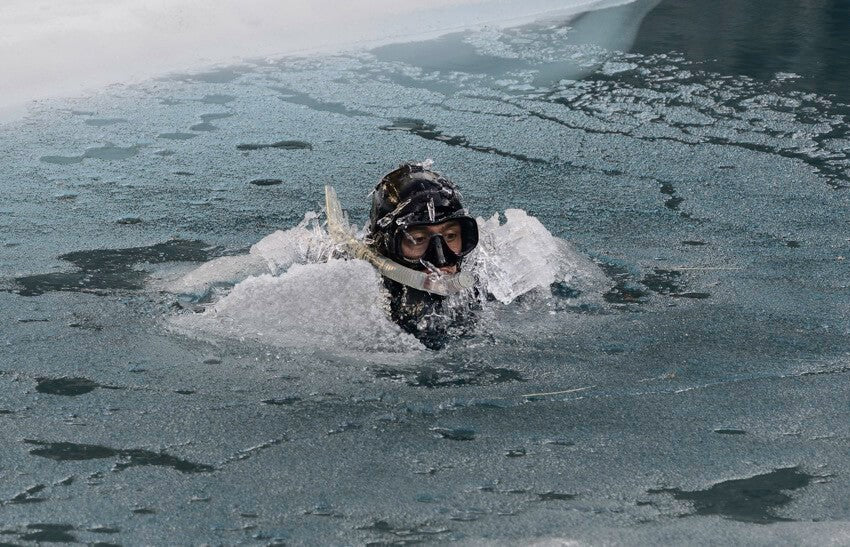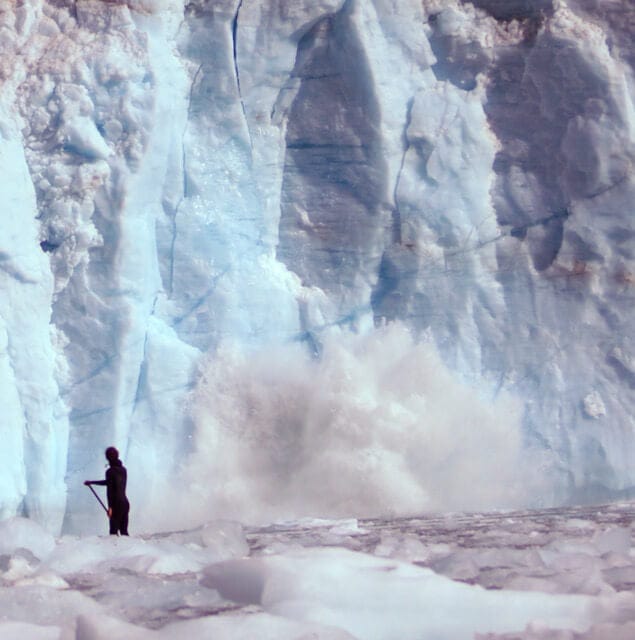
I’m on a surf trip in Iceland at the moment—that’s 66 degrees north, just a hair shy of the arctic circle. In other words, it’s cold. At the moment, the water is around 48 degrees, the air is a bit less, and the wind is ripping at a solid 40 knots. But it’s ripping offshore, which means that I’m doing multiple sessions per day. After all, the wind could turn tomorrow and it could be onshore for weeks—gotta get it while it’s good!
Having grown up in Hawaii and spent 15 years on an island in the south Pacific, these temperatures are not exactly familiar to me. To say I am out of my element when completely inundated by the elements is an understatement. But if you want to see and surf the world, you have to be willing to step out of your comfort zone. Fortunately, wetsuits are so good these days that it makes frigid surf zones much more hospitable. But sometimes thick rubber isn’t enough—especially if you are an island boy who isn’t used to traveling with neoprene. Here are a few extra tips that can come in handy in the colder latitudes—and that I’ve been taking advantage of here in Iceland.
1. Don't skimp on your rubber
I’ll be the first to admit that I cut corners when possible. Finding ways to get by without spending a lot of money means that I can do more trips, and who doesn’t want that? But one place I never skimp is with wetsuits. Especially when you are heading somewhere really cold, it makes a huge difference to have fresh rubber that is thick and secure. Since I don’t surf in wetsuits every day, my suits usually last a season or two, but any longer than that and they start to break down. At the moment, I’m in new booties, gloves, and a hooded R4 from Patagonia, and my core temperature is staying good for hours in bone-chilling water. Can’t complain about that!

2. Take care of your suits
Particularly for those of us who don’t use wetsuits very often, it is very important to make sure we take good care of them when they are in storage. Always rinse your rubber with fresh water after every use, and hang them to dry rather than dumping them in a corner. When storing wetsuits between trips, hang them on a clothes hanger per the garment instructions.
3. Strategize when you suit up
When the air is below 50 and the wind is howling, you can’t really take your time when suiting up. When at all possible, change into your wetsuit before leaving the house. If the drive to the surf is too far to accommodate that, then strip down and suit up by layer. I usually drop my pants first while keeping the rest of my body insulated, then pull on my wetsuit up to my waist, followed by my booties. After that, strip your top layers off but keep your beanie on to maintain head heat. Get the wetsuit zipped up and gloves on before trading in wool hats for rubber hoods, and make sure you have all of your other surf gear ready before you get suited up. After your session, strip off your wetsuit and get bundled up in clothes in the same way, just in the opposite order.
4. Bring a thermos of hot water
I learned this one from the Milo surf charter guys in Alaska. Before heading out for a freezing surf, fill an insulated bottle with hot water. Then, when you paddle in and your core temperature is way below where it should be, you can pour the water down the chest of your wetsuit and wallow in the joy of pure, unadulterated heat for a few minutes before stripping down and changing into dry clothes.
5. Use a plastic bag for your feet
This is especially helpful when pulling on a wet wetsuit, but is worth doing even when your suit is dry. Take an old shopping bag and wrap your foot in it when pulling on your wetsuit, and you’ll be surprised how easily that rubber slips on.
6. Tips for booties and gloves
It might seem silly to think that there is a right and a wrong way to put on booties and gloves, but in reality a few simple strategies can make your session way more enjoyable. The main goal is to avoid flushing and ballooning. Before you put on your booties, roll up your cuffs of your suit legs. Once the booties are on, roll the cuffs down over the booties (so they can flush) and make sure that seam and cuff is straight and flush. Then do the same for the gloves, making sure to roll both arm cuffs up before pulling on either of your gloves (since your fingers will be very clumsy once your gloves are on). Pull on your dominant hand’s glove first, as that hand is probably a bit more dexterous, and will have a better chance of pulling the other side on even in its clumsy, gloved state. And again, make sure that the cuffs of your suit and gloves are flush and don’t ride up, to minimize the chances of getting water flushed up into your wetsuit.

7. Have a changing bin
Chances are, when you are changing after a cold session, the last thing you are thinking about is keeping your suit clean and safe. But changing on the ground can not only get your suit muddy, but can also cause unnecessary wear and tear on rocks and plants. If at all possible, try to carry a plastic tub that you can stand in to change out of your suit. This can also double as a storage bin for wet neoprene. If you can’t travel with a bin, you can also use a piece of tarp or heavy plastic sheeting to stand on and wrap your suit up with.
8. Dry your suit as soon as possible
Wherever you are surfing, hopefully the waves pump for you the whole time. If they do, you will probably be doing both evening and morning sessions, which means only 8-10 hours between surfs. There’s nothing worse than a wet wetsuit, especially when it’s freezing cold during the dawn patrol, so get that suit hung up and dried as soon as possible. Or, better yet, bring two suits, so you always have one that is dry. Putting on wet gloves and booties is no fun either, so make sure they are turned upside down to drain while drying.
You might also like:
Swells 101: How are Waves Formed?
Swells 102: Ground Swell Versus Wind Swell
How to Survive Wipeouts and Hold Downs
 I’m on a surf trip in Iceland at the moment—that’s 66 degrees north, just a hair shy of the arctic circle. In other words, it’s cold. At the moment, the water is around 48 degrees, the air is a bit less, and the wind is ripping at a solid 40 knots. But it’s ripping offshore, which means that I’m doing multiple sessions per day. After all, the wind could turn tomorrow and it could be onshore for weeks—gotta get it while it’s good!
Having grown up in Hawaii and spent 15 years on an island in the south Pacific, these temperatures are not exactly familiar to me. To say I am out of my element when completely inundated by the elements is an understatement. But if you want to see and surf the world, you have to be willing to step out of your comfort zone. Fortunately, wetsuits are so good these days that it makes frigid surf zones much more hospitable. But sometimes thick rubber isn’t enough—especially if you are an island boy who isn’t used to traveling with neoprene. Here are a few extra tips that can come in handy in the colder latitudes—and that I’ve been taking advantage of here in Iceland.
I’m on a surf trip in Iceland at the moment—that’s 66 degrees north, just a hair shy of the arctic circle. In other words, it’s cold. At the moment, the water is around 48 degrees, the air is a bit less, and the wind is ripping at a solid 40 knots. But it’s ripping offshore, which means that I’m doing multiple sessions per day. After all, the wind could turn tomorrow and it could be onshore for weeks—gotta get it while it’s good!
Having grown up in Hawaii and spent 15 years on an island in the south Pacific, these temperatures are not exactly familiar to me. To say I am out of my element when completely inundated by the elements is an understatement. But if you want to see and surf the world, you have to be willing to step out of your comfort zone. Fortunately, wetsuits are so good these days that it makes frigid surf zones much more hospitable. But sometimes thick rubber isn’t enough—especially if you are an island boy who isn’t used to traveling with neoprene. Here are a few extra tips that can come in handy in the colder latitudes—and that I’ve been taking advantage of here in Iceland.


